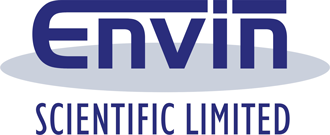
How Nanophotonics could be the future of thermal imaging
Nanophotonics is creating new ways to filter light, including at the infrared end of the spectrum used for thermal imaging.
A team from the University of Texas at Arlington are working with the US Army Research Laboratory on such devices, with an aim to use them for thermal imaging and resonant filtering.
What are Nanophotonic filters
Nanophotonic filters work using photonic lattices and resonance to shape the spectrum of light, historically at the shorter wavelength blue end of the spectrum.
In order to use them for thermal imaging, they must work with longer wavelength, lower frequency infrared light.
Electrical engineering professor Robert Magnusson explains the challenges involved: “Changing frequency or wavelength to this region requires that we completely change our fabrication methods.”
Like conventional IR bandpass filters, nanophotonics can be built on a substrate such as glass, with a nanopatterned silicon film laid on top of the substrate.
They may also be constructed out of lattices of nanowires that produce the desired refractive properties to capture and release light in the target wavelengths.
The UTA team are currently working with the metalloid germanium – an element with semiconductor properties – to build nanophotonic lattices that work in the IR range of the spectrum.
An impact on society
Peter Crouch, dean of the UTA College of Engineering, says the motivation behind the research is “to have an impact on society”.
“This agreement with the Army Research Lab is an excellent opportunity to create devices that will make an impact for years to come,” he adds.
Envin Scientific currently offer IR pass, visible block glass absorption filters using RG-type glass from Schott and equivalents from Hoya, Kopp and other manufacturers.
We also supply longwave pass thin-film optical filters capable of transmitting wavelengths longer than a desired value while reflecting the shorter wavelengths in a usable form.
Envin Scientific can produce layered filters, mirrors and lenses to achieve very specific requirements – combining IR bandpass with other characteristics in a single unit.
To find out more, or to enquire about any specific type of thin-film optical filter or absorption filter you might need, get in touch today and the Envin team will be happy to help.

